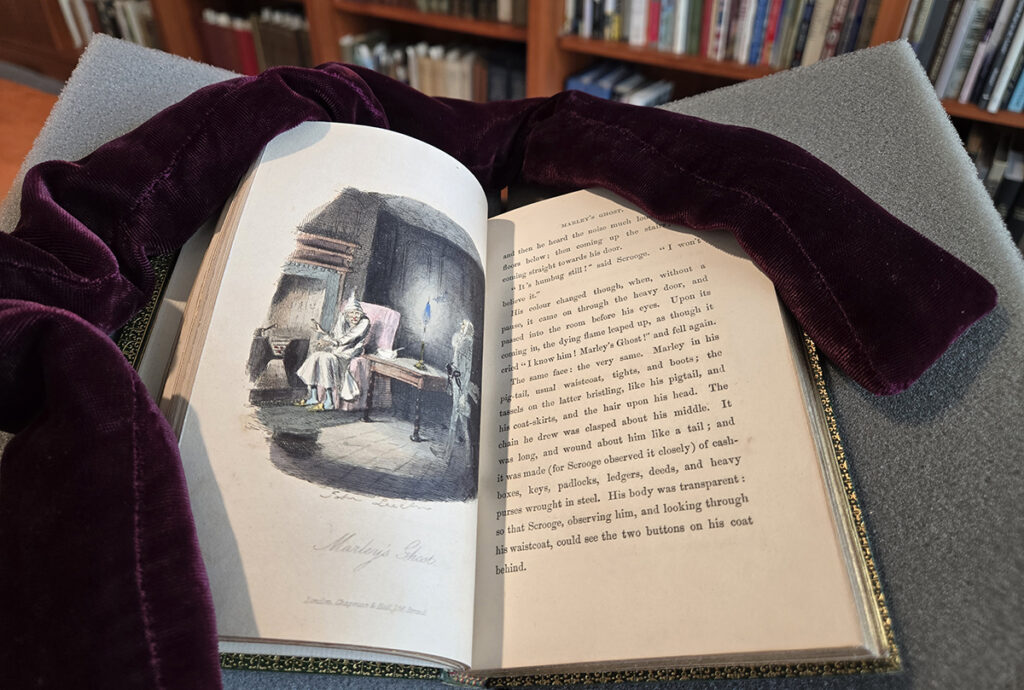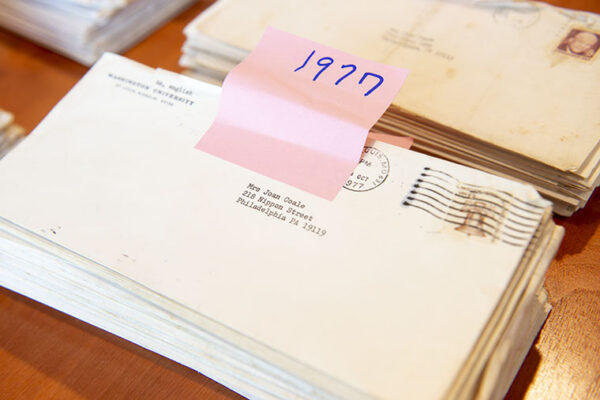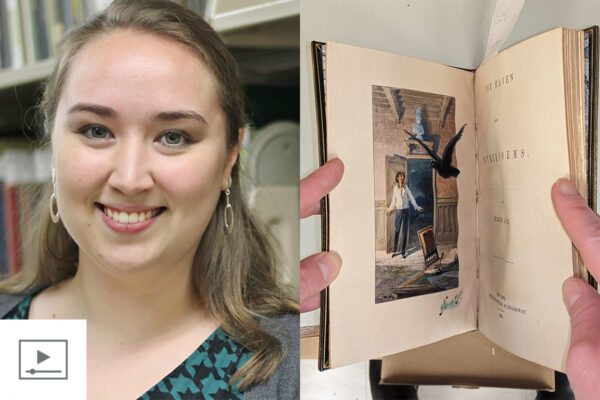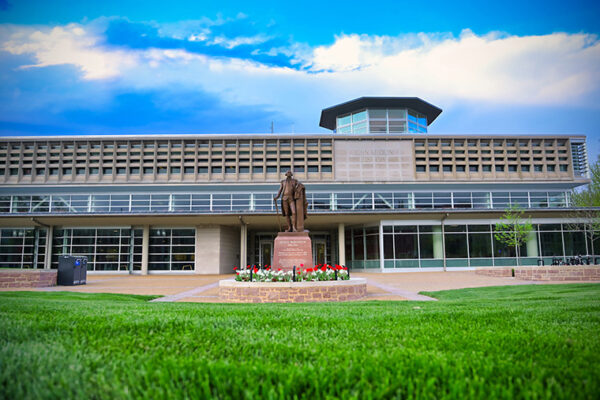This Christmas, as you enjoy your roast turkey and day off work, take a moment to thank Charles Dickens. His beloved 1843 novella, “A Christmas Carol,” helped create our contemporary notions of Christmas, said Cassie Brand, curator of rare books at WashU Libraries.
“Before ‘A Christmas Carol,’ Christmas was more of an adult holiday with a lot of drinking and carousing,” Brand said. “By putting Tiny Tim, this small disabled boy, as the center of the holiday, Dickens popularizes the idea that the holiday should be about family and children. ‘A Christmas Carol’ also popularizes the phrase ‘Merry Christmas’ and the tradition of roast turkey as the centerpiece of the Christmas table.”
On Thursday, Dec. 4, WashU Libraries celebrates Dickens and his enduring impact with a free public reading of “A Christmas Carol,” with actor John Wolbers playing the part of Dickens. Visitors to Olin Library at Washington University in St. Louis also will have the opportunity to view the Libraries’ extensive collection of Dickens first editions and related artifacts. Here, Brand shares more about the book’s legacy.
Why host a public reading of ‘A Christmas Carol’?
It’s going to be really fun, with hot cocoa and cookies and everyone coming together to enjoy a work that we all know and love. There have been more than 30 film adaptations of “A Christmas Carol” — not to mention dozens of television versions, stage plays and radio shows. But to hear the original words from an original first edition will be a unique experience.
How was Dickens perceived in his time?
When you think about our modern TV shows and how we all talk about them around the water cooler, it was the same thing with Dickens. Everyone is reading him. Well, not reading, exactly. A lot of people were illiterate. But there was a lot of communal reading, with someone reading the story aloud while others were knitting or cooking. When “A Christmas Carol” was published, people loved it. With the ghosts and the spooky setting, it follows the Gothic tradition, which was really popular at the time. But it was his innovations around Christmas that really resonated with people. He makes the holiday more about family. It’s wonderful to see this miserly, curmudgeonly Scrooge see the error in his ways and become a good person. Who doesn’t want to see that?
What is in WashU’s Dickens collection?
At our showcase, guests will have an opportunity to see our amazing collection of Dickens, including multiple first editions. What is especially exciting to me is that we have copies of “fascicles” in their original wrappers. A lot of Dickens’ works were serialized — he would publish a couple of chapters at a time while he wrote the next set. These pamphlets are hard to find because they were read to death until they fell apart. So to have some in their original, serialized format is just very exciting. We also have a complete set of first editions of his Christmas stories — there’s five, of which “A Christmas Carol” is the most famous. We also will showcase two letters handwritten by Charles Dickens and various illustrated editions of “A Christmas Carol” so people can see how illustrators have told the story over time.




